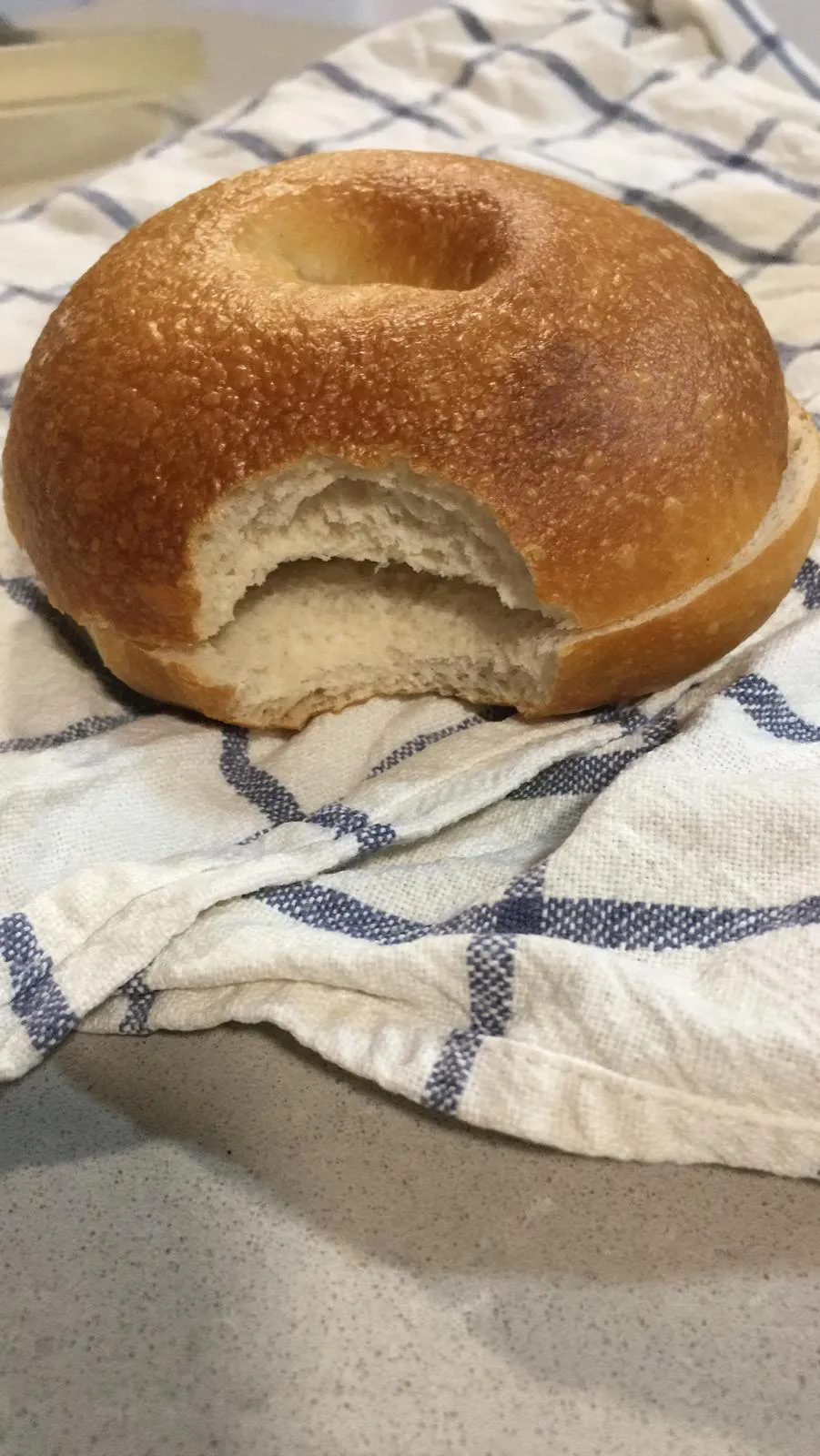
Hello! We have made many bagels and have nearly perfected our bagels, but one issue we continue to have is that while the bagel is nice and big and fluffy looking, when we take a bite, the bagel seems to "flatten" (as in, it doesn't bounce back to the original shape). This does't seem to happen with bagel shop bagels. We thought maybe our bagels were slightly undercooked (because it's almost as if the bagel is very doughy so for that reason, it doesn't bounce back, but that doesn't seem to be it). We use a mixer to knead the dough for about 8 minutes and then let the dough rest for 10 minutes, shape the bagels, let them rest 10 more minutes, fridge over night (at about 2 degrees celcius) and then take them out to proof for about 30 minutes before boiling 1 minute per side and baking. Any ideas why they seem to collapse when bitten? To be clear, they don't collapse in the water or oven. Only after taking a bite. Thank you and happy bagel adventures!
Understand why bagels would be flat after baking, but not "after taking a bite".
What recipe are you using?
Careful of dehydration in refrig. Mist the bagel shapes.
No need to proof after refrig. Just dunk the cold bagels.
See my posting (today) suggesting cold-retard before shaping
Hi gerryp, you can see in the attached photo what we mean by "collapse after taking a bite" if you look at the bottom half of the bitten bagel.
The recipe we use is a blend of many recipes of follows the basic recipe of flour/malt/salt/yeast/sugar/water.
Will check out your post now. Thank you.
The crumb does not look as dense as a proper New York water bagel should look. Yours looks more like those faux bagels served by the chain bagel shops targeted at folks who just like the [i]idea[/i] of bagels.
You don't mention the hydration you use but I'd guess it should be lower and with less kneading.
g
I concur with Gary. The crumb looks more bread-y than bagel-y.
Welcome to TFL!
there are a handfull of bagel bakers here. I am not one of them, so I can't offer direct help. But I will kibbitz a little. :-)
If you haven't successfully made something before, then starting out by using a combination or "mash-up" of two or more formulas can be a recipe for disappointment. without a success or three under his/her belt, a newbie doesn't have the experience yet to create a new formula.
Every successful and established published formula usually depends on a critical balance of ingredients and procedures. in other words, ingredient X of recipe 1, may be incompatible witb (or "work against") ingredient Y or procedure Z of recipe 2.
I see 2 ways you could proceed:
1) You can back up a bit, and pick just one formula, and do your best with it... Making no substitutions... mainly because new bakers don't yet know what is an _equivalent_ subsitution without experience. (That's a major source of new users seeking help here, they made a substitution that they didn't realize was not valid/equivalent)
2) You could post your current actual formula (what you're trying to invent) and hopefully an experienced bagel maker can help you modify it, via ingredients and or procedures, to get a good result.
My observations as a "helper" here, lead me to suggest that it's easier and quicker to attempt to duplicate a successful established formula than to invent your own. It usually takes something along the lines of three or four attempts to get an existing formula right, versus 10 attempts when you're blazing your own trail without prior experience.
That said, you are the king/queen of your kitchen, and trail-blazing (or re-inventing the wheel) can be a fun adventure, for those so inclined.
Good luck, and bon appétit!